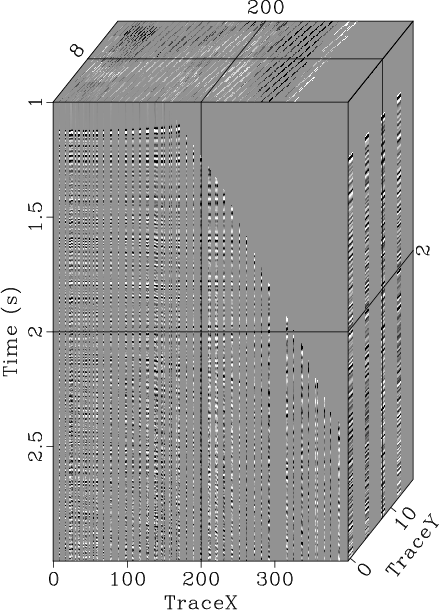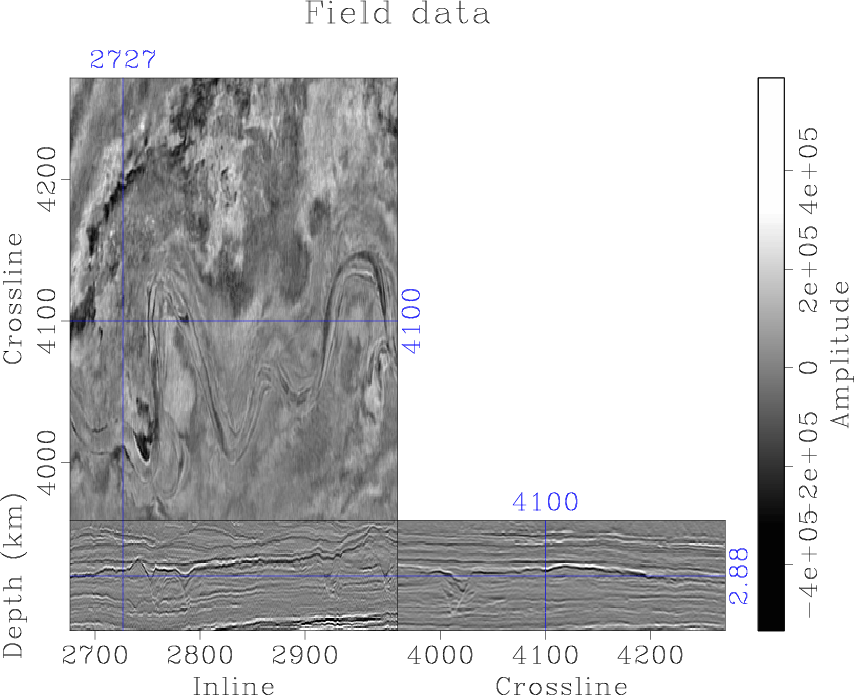A new paper is added to the collection of reproducible documents: Seismic data interpolation using streaming prediction filter in the frequency domain


Surface conditions and economic factors restrict field geometries, so seismic data acquisition typically obtains field data with irregular spatial distribution, which can adversely affect the subsequent data processing and interpretation. Therefore, data interpolation techniques are used to convert field data into regularly distributed data and reconstruct the missing traces. Recently, the mainstream methods have implemented iterative algorithms to solve data interpolation problems, which require substantial computational resources and restrict their application in high dimensions. In this study, we proposed the f-x and f-x-y streaming prediction filters (SPFs) to reconstruct missing seismic traces without iterations. According to the streaming computation framework, we directly derived an analytic solution to the overdetermined least-squares problem with local smoothness constraints for estimating SPFs in the frequency domain. We introduced different processing paths and filter forms to reduce the interference of missing traces, which can improve the accuracy of filter coefficients. Meanwhile, we utilized a two-step interpolation strategy to guarantee the effective interpolation of the irregularly missing traces. Numerical examples show that the proposed methods effectively recover the missing traces in seismic data when compared with the traditional Fourier Projection Onto Convex Sets (POCS) method. In particular, the frequency domain SPFs are suitable for high-dimensional seismic data interpolation with the advantages of low computational cost and reasonable nonstationary signal reconstruction.














